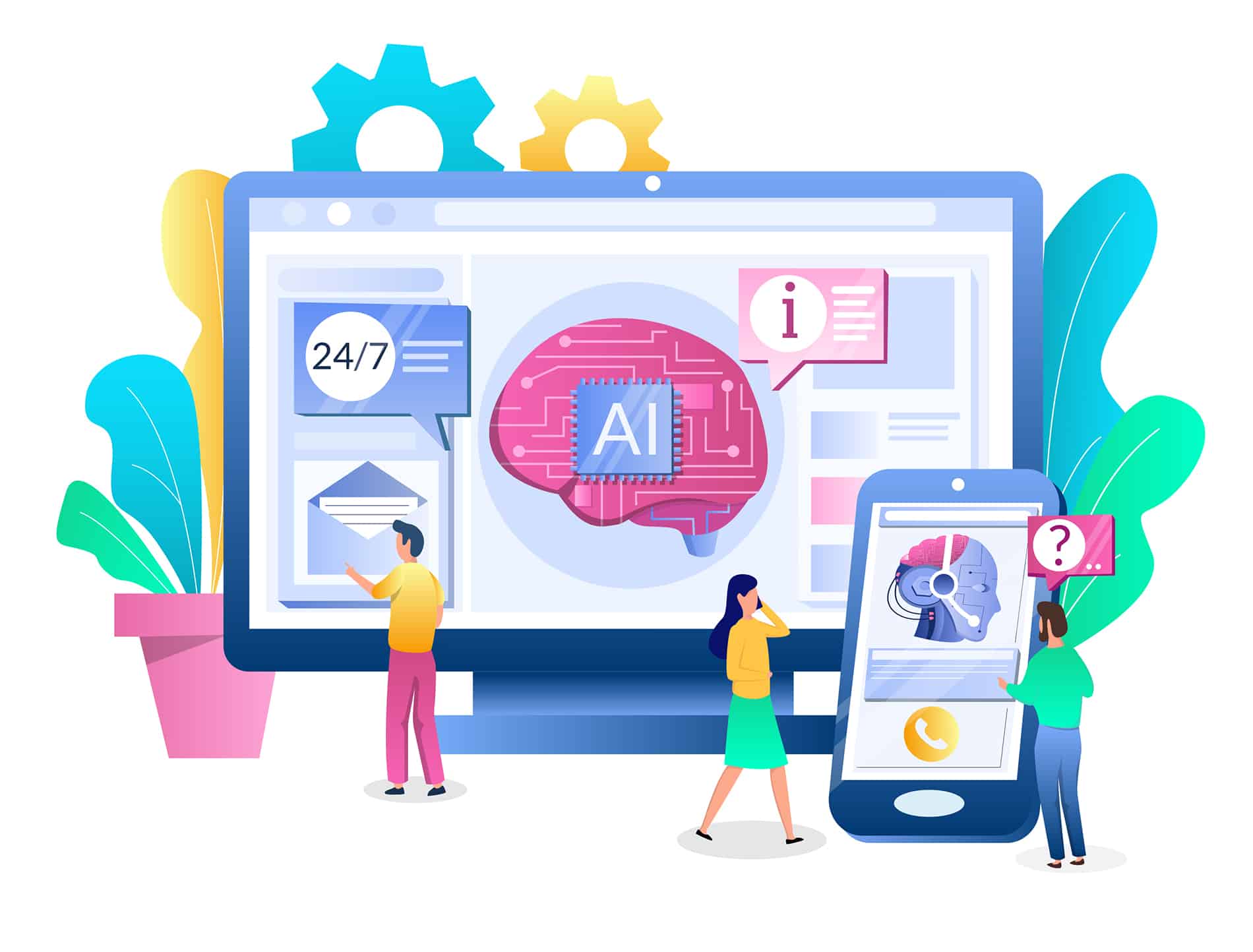If you have experience in IT, you know that minor issues and anomalies in IT services and delivery can quickly become a massive bottleneck for technicians and service desk employees. Without the right IT service desk technology, manual processing can bog down your resources and cause unnecessary waits for those needing help.
Long waits for help or increased friction when resolving problems can cause end-user satisfaction to fall as people suffer through long hold queues and waste valuable work hours trying to resolve issues instead of focusing on their own projects.
In this article, we will discuss three challenges faced by the IT service desk and service desk employees, and what you can do to overcome them.
Challenge 1: Reducing Issue Overload
Time is money – that’s especially true when it comes to IT services and the IT service desk. Without processes in place to effectively answer everyday questions or address minor issues, high-volume IT departments can easily spend hours answering phones or requests sent by multichannel support systems. This leaves little time in their workday to address larger issues and act proactively to prevent any potential problems.
One way to resolve this challenge is to use an IT Service Management (ITSM) platform and create an easy-to-use self-service portal with a robust, searchable knowledge base. An IT self-service portal is a place where users can go first and look up their own answers to try to resolve their issues. If they can’t find what they need within the knowledge base, they can hit a button within the portal and request support online. The best way to do this is to leverage a service catalog so that issues are properly organized and automatically routed to the right place for quick resolution – this automated workflow is another time saver.
If nothing else, you need to make sure your IT self-service portal has a knowledge base with great search capacity and a proper service catalog. If you need inspiration, you can have a look at some stellar portals here.
In addition to self-service, you can use your portal as a place to kick off automated workflows using an integration and automation tool like iPaaS to power dynamic forms that live on your portal. Using these forms you can save your IT service desk time by automating tasks like name changes, password resets, software requests and provisioning.
Supercharging your ITSM can lay a strong foundation for IT service desk success – especially when you’re working with limited resources but an increase in demand. ITSM groups that are able to manage the flow of service requests as effective project managers—and automate away the most time-consuming tasks— are the ones that maximize their resources in the pursuit of servicing end-users with minimal delay or frustration.
At the City of Madison – self-service is a top priority.
The IT team implemented TeamDynamix ITSM with PPM – focusing on self-service to kick off the city’s IT service delivery transformation according to Abigail Ferguson, Customer Success Manager for the City of Madison’s Information Technology.
“Our client portal will really open up the gateway to all city staff to be able to request IT services and also access the self-service portion of our portal,” Ferguson said. “It’s really going to be a game changer for us because it will be consolidating all of the different places people used to go for resources.” With this key pillar in place, the team can further build out the knowledge base to expedite self-service resolution.
The IT customer portal has been a big project for the City of Madison IT team. Not only will it consolidate all of the different resource areas currently in use, but it will house two knowledge bases. The first is an internal IT knowledge base that will serve as a place for IT staff to quickly locate information and answers as needed to address tickets and requests.
The second knowledge base will be geared towards self-service for staff and citizens who want to locate answers themselves. “This will allow us to attach articles to tickets and teach people along the way how to find the answers they need. This will really empower our customers with resources and knowledge,” Ferguson said.
And ultimately, this improved self-service experience will help the city IT team lower ticket volumes.
“We are seeing the same resource constraints other cities are,” she said. “We are understaffed at times and need to focus on higher-value implementations. So, anything we can do to empower our users to find the resources they need for self-service is a must for us.”
Challenge 2: Reducing Long Resolution Times and Lost Issues
Customers want their issues to be resolved quickly and accurately. However, without proper communication tools, IT departments can struggle to meet service-level commitments. In addition, it can be hard for IT leaders to gather data and have visibility around where there can be improvements and efficiency gains. A good way to see if you have an issue here is to track SLAs. You can do this using a technology package within your ITSM that allows you to flag tickets that are approaching deadlines to meet the SLA.
Next, following a formal ITIL framework will help expedite resolution times. Incident and request management ensures that you can keep track of the status, giving clear visibility into timelines and deliverables. Consequently, if any incident or request takes too long to resolve, the incident management solution will alert IT service staff right away.
At Nutrabolt, a rapid-growth active health and wellness company based in Austin, Texas, they are using TeamDynamix to automate ticket assignments, create accounts and more. “We had a help desk tool in place, but it was not purposefully built. It was very generic, and there was no discipline in the use of it,” Mark Dittenber, Director of IT, said.
Dittenber and his staff needed a highly flexible and customizable platform that could support new IT processes with automated workflows now, and into the future, as the company’s IT operations continue to mature.
“I liked the lightweight nature of TeamDynamix, as well as its ability to scale with our needs,” he said.
Dittenber and his team were able to implement TeamDynamix in a matter of weeks. They began with IT Service Management and have now expanded to include project management. All the configurations and automation are created without any technical resources on TeamDynamix’s no-code platform.
Within the tool, Mark and his team established customized forms and automated workflows to create network accounts, assign rights and privileges to new teammates, submit and track service requests, request and approve IT changes, provision new devices and more.
As they create new IT processes from the ground up, they’re also building out a knowledge base and a self-service portal. Having thoughtfully crafted processes in place — and the right enterprise service platform to support them — has already made a big impact in just a few months.
“We really notice this when we onboard new teammates, they are ramping much faster,” Dittenber said.
Challenge 3: Preventing Recurring Issues
Recurring issues are a common problem for IT service desks. These types of issues can take up a significant amount of time for IT staff, delaying progress on other initiatives. In many cases, users report the same kind of incidents – for example, several employees might complain about losing access to the corporate database. If you are using only a basic ticketing system, you might find yourself replying with the same solution over and over again. With a self-service portal and knowledge base, people can search for their issues and find their own solutions without ever needing to submit a support ticket.
In addition, a knowledge base can help IT service staff understand trends and popular topics/issues so they can proactively mitigate any issues that might arise with changes to systems or through the introduction of new software or tech.
To build a proper knowledge base you can follow the principles of Knowledge-Centered Service (KCS®) and resolve issues faster while optimizing IT resources. By promoting self-service as the primary method for customers in need of IT support you can save time and money.
The University of South Dakota (USD) struggled with knowledge residing in silos across various departments as well as poor communication, leading to inefficiencies when delivering service.
Katharina Wymar, head of Project Management, said “We lacked that one platform, that one mindset that allowed us to share knowledge.”
That’s when they turned to the solution of a knowledge base so that all of their information could be in a single, easily accessible location.
After building out their knowledge base and implementing KCS they quickly saw an 18% reduction in time logged to service tickets, and after six months there were 31,000 users, 262,000 page views, and 5,000 knowledge articles being included in the base.
Solving IT Service Desk Challenges with Automation
At Pima County, one of the goals of bringing on TeamDynamix for ITSM and iPaaS (integration platform as a service) is to reduce toil.
“People feel so much more empowered and have so much more worth when they are doing things that are intellectually rigorous and challenging versus when they are just repeating the same mechanical actions over and over and over with very little thought,” Mark Hayes, information technology leader at Pima County, said.
“Our ITSM is our entry point to our entire IT organization, and we want our employees to graduate out of this area into other roles within our organization – network technicians, client services, desktop technicians, developers and project managers,” he continued. “If all they’re doing is handling tickets and doing the same mundane, manual tasks over and over that’s not particularly great training. So investing in tools that allow our employees to engage in meaningful work is something that’s important to us as an overall IT organization.”
With TeamDynamix now in place, Pima County is looking to automate and integrate as much of the manual ITSM processes into workflows as they can.
“The drudgery of working through mundane, repetitive tasks doesn’t exist just in IT,” Hayes said. “I think the more we can reduce toil within the departments that we support, the more people are going to buy in and understand the value of what we’re trying to achieve. There’s nothing like success to breed more success, and once other departments see the benefits they’re going to want these tools too.”
One of the key advantages of TeamDynamix iPaaS is its no-code nature, which empowers technical employees across the organization to set up their own integrations and automations. This democratization of technology reduces the dependency on IT teams, who often face a backlog of requests from various departments.
By enabling non-IT employees to create and manage their own integrations and automations, iPaaS frees up IT staff to focus on higher-level tasks, such as strategic planning and cybersecurity. This not only improves overall efficiency but also fosters a culture of innovation and collaboration within the organization.
Editor’s note: This post was originally published in November 2020 and has been updated with new information.

